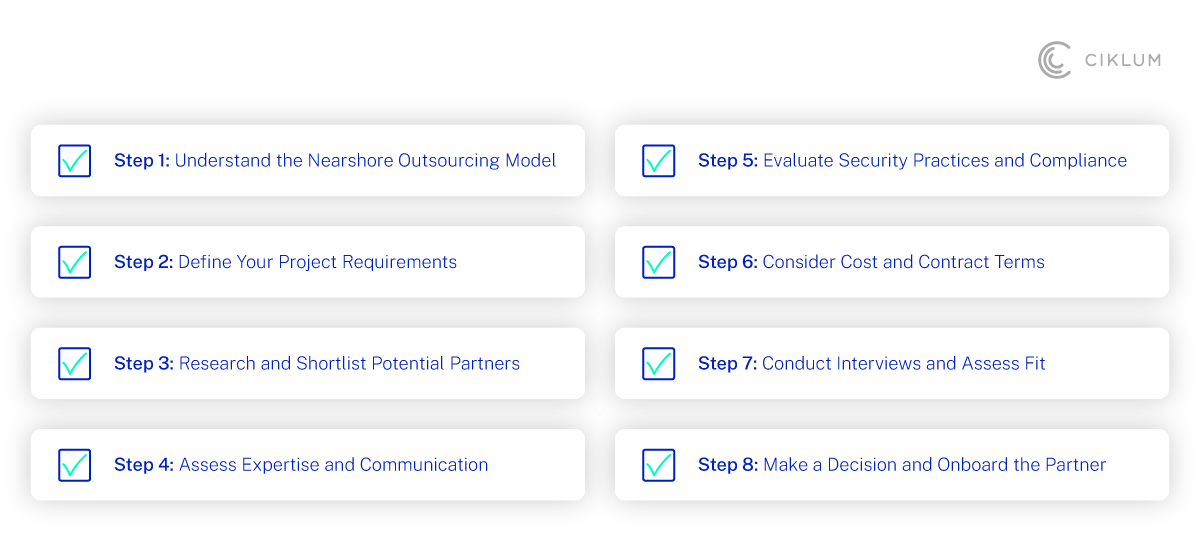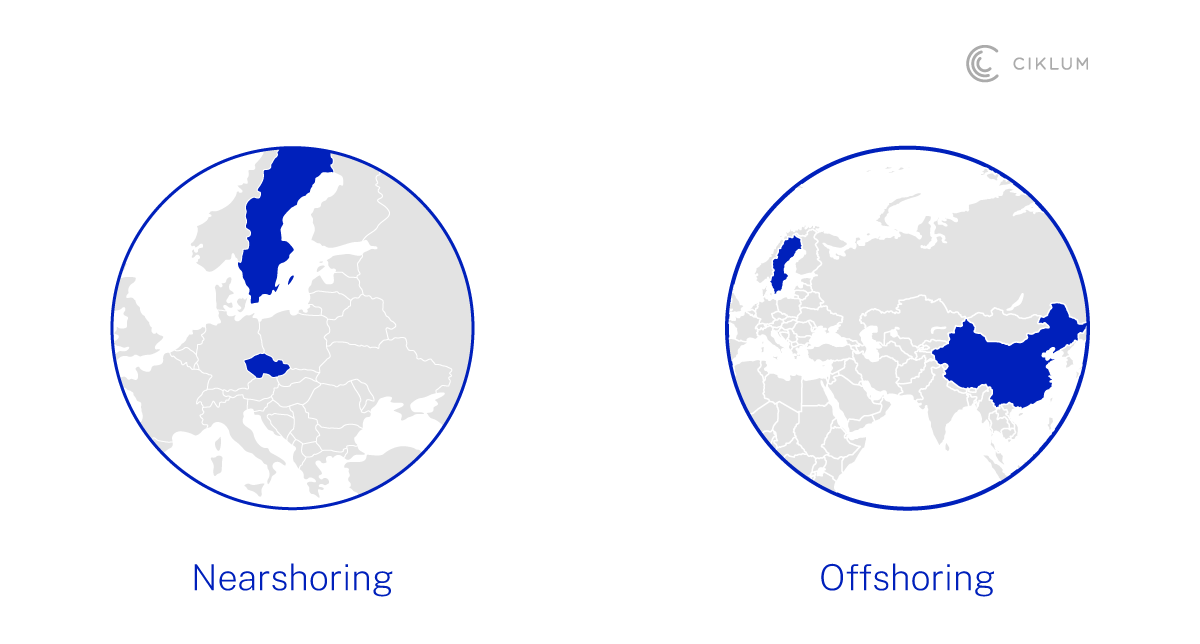- How to Choose the Right Nearshore Software Development Partner: A Step-by-Step Guide
- Step 1: Understand the Nearshore Outsourcing Model
- Step 2: Define Your Project Requirements
- Step 5: Evaluate Security Practices and Compliance
- Step 6: Consider Cost and Contract Terms
- Step 7: Conduct Interviews and Assess Fit
- Step 8: Make a Decision and Onboard the Partner
- In Summary: Diligence Pays Off In The Long Run
Key Takeaways:
- Nearshoring combines access to outsourced skills and geographical synergy
- The selection process should be thorough and aligned with project objectives
- Effective communication and a strong commitment to security are essential
- Finding the right partner can help drive growth and innovation in the long-term
How to Choose the Right Nearshore Software Development Partner: A Step-by-Step Guide
Nearshore software development is becoming an increasingly popular option for businesses that want to add skills and expertise to their software projects, with the worldwide market for nearshore outsourcing expected to grow at a rate of 11% year-on–year between 2023 and 2028.
It’s easy to understand why nearshoring - outsourcing to a development partner in a neighboring country, or in the same region - is gaining so much traction. It gives businesses the chance to massively expand their software development capabilities, through flexible and cost-effective access to wider talent pools. What’s more, it delivers these advantages without the time zone and logistical challenges that come with offshoring to a completely different part of the world. This blog covers the eight key steps to choosing the right partner for nearshore software development outsourcing.

Step 1: Understand the Nearshore Outsourcing Model
The first step is to understand the key distinctions that make nearshore outsourcing so beneficial, and understand how they can apply to your organization specifically. Choosing a nearby country that’s in a similar time zone is particularly helpful, as it means that you and your partner will be working at similar times of the day, facilitating easier feedback and collaboration.
However, this isn’t the be-all and end-all: it’s also important to ensure that there is also close alignment in terms of working cultures and languages; countries slightly further away should be prioritized if they represent cultural similarity and/or linguistic compatibility.

Step 2: Define Your Project Requirements
With your target country (or countries) in mind, you can start to scope out the specifics of what you’re looking for. This involves two separate exercises:
 Technical skills and expertise:
Technical skills and expertise:
A detailed internal review of the requirements for software development, encompassing technical demands, budget constraints and project deadlines.
 Project goals and objectives:
Project goals and objectives:
Creation of a list of project objectives, and the key building blocks required to deliver on those objectives, including high-level timelines and resource requirements.
Step 3: Research and Shortlist Potential Partners
At this stage, you can start to look for and shortlist prospective nearshore development partners, based on a range of different parameters. As well as comparing partners in different nearshore regions, you should ideally evaluate the breadth and quality of their online presence and reputation. To begin with, you don’t need to drill down too far into the detail of how they work and what they offer; we suggest shortlisting those who seem like a good fit at a high level, then explore the detail in the next steps.
Step 4: Assess Expertise and Communication
You can now begin to investigate the working practices and expertise of each of the nearshore partners on your shortlist. We recommend starting with communication, and assessing how they would collaborate with your team, bearing in mind their remote location and potential time differences. In particular, they should be able to demonstrate the collaboration tools they use, how often they check in and provide status updates, and the platforms used to share knowledge and documentation.
This is also a good opportunity to review their portfolio and case studies of previous projects they have worked on. If they can demonstrate success in your specific industry, that’s a big plus point.
Step 5: Evaluate Security Practices and Compliance
Security has to be a top priority when working with any nearshore software development partner. This is not only because of the ever-rising threat of cybercrime, but also because the remote relationship necessitates the transferring of sensitive data and documents between your organization and theirs.
A good partner will be able to demonstrate robust security measures and controls that they have put in place to protect confidential data and intellectual property. You should ask questions around their access controls, data encryption, and compliance with key standards and regulations like ISO 27001 and GDPR.
Step 6: Consider Cost and Contract Terms
According to Deloitte, 59% of businesses adopt nearshore software development services as a way of cutting their development costs. However, while nearshoring to a much cheaper country can save a lot of money, the scale of the potential savings can be eroded if hidden costs aren’t picked up on at the evaluation stage.
Areas where costs can creep in often include fluctuations in currency between the two countries, dependency risks, making upgrades along the way, and scaling nearshore software development teams up and down to meet demand mid-contract. It’s vital to gain clarity in all these areas before firming up an agreement with any nearshore outsourcing company.
Step 7: Conduct Interviews and Assess Fit
By this point, you will most likely have whittled your shortlist down to a very small number of contenders (or possibly even one). This means you can now conduct interviews and workshops with key members of their team to ask more detailed questions, and see whether your assessment of their capabilities matches up with the practical reality of working with them.
The workshops in particular will give you hands-on experience of collaborating with their team, using whichever communication tools they use, and dealing with any differences in culture, language understanding and time zone.
Step 8: Make a Decision and Onboard the Partner
Based on all the information you’ve gathered in the previous steps, you should now have the confidence to choose the right partner and come to an agreement. From that decision, you can then begin the onboarding process and start aligning the partner’s resources and skills to your specific projects. This should involve clarifying project specifics, forming the joint team that will be working on it, and adapting management processes to cater for project evolutions as required.
In Summary: Diligence Pays Off In The Long Run
It may seem like this is a long and convoluted process - but it’s absolutely critical to be as thorough as possible in choosing a nearshore partner. Selecting the right company that complements your industry specifics, project requirements and existing skills base can make the difference between your next project being a success or a failure (relative to your competitors). Furthermore, they can become a trusted partner in the long-term that can play an active role in supporting your innovation and growth strategies for years to come.
Blogs




































